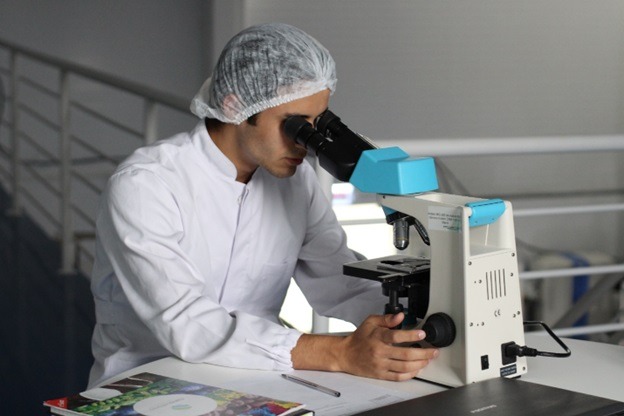Health and wellness have been one of the core focuses of advancing technologies. Robust healthcare facilities, better medication, easier access to vital information, and lifesaving treatments allow people to live longer today. Globally, in just the past two decades, World Health Organization data reveals that life expectancy has gone up by an average of 6 years. It has much to do with how technology has improved healthcare overall. A prime example of these advancements came to light during the recent pandemic that hit the world.
Case-in-point: The COVID-19 Pandemic
The true magnitude of how far medical technologies have come is visible in the time it took to develop a COVID-19 vaccine. When the first influenza pandemic broke out in 1918, it wasn’t until 1945 that researchers were able to identify the virus and distribute a certified vaccine for widespread use. However, the SARS-CoV-2 virus, which caused the recent pandemic, first came to light in December 2019. By December 2020, the Pfizer vaccine received emergency use authorization from the FDA.
As a result, millions of lives were saved in due time. Where it once took decades to develop an effective cure for the simplest of diseases, advanced technology is allowing researchers and scientists to deliver lifesaving medication within a year at most. Over 7 billion doses of the COVID-19 vaccine have been administered globally, allowing nations to develop immunity against the virus.
How are technology & life expectancy related?
Improvements in technology have streamlined mechanisms for finding lifesaving cures. For instance, mesothelioma survival rates have improved due to better detection tools available to doctors and researchers. Ongoing studies have also shown notable advances in many surgical methods for treating mesothelioma. Similarly, for other diseases, technology has played its role in providing better, timelier diagnoses and improving treatment methods.
The world has witnessed a significant increase in survival rates through the help of technology. A host of readily available information, thanks to the internet, a wide range of wearable devices and apps combined with a shift towards healthier living, has resulted in a higher survival rate. Modern technologies like AI and data analytics are being experimented with to improve survival rates.
Here are four ways in which technology is improving life expectancy around the world:
1. Improvement in Medicine and Treatment Options
Compared to a few decades ago, people today have access to better prognosis and treatment options. Diseases that in the past would cause havoc are on the brink of extinction thanks to medical technologies. Malaria, for instance, has almost been eliminated from the global stage through constant innovation, implementation of the latest technological breakthroughs, and the dissemination of pertinent information and awareness.
Experiments continue in this regard through nanotechnology, which is being touted as the next frontier of innovation to curb malaria. For other ailments, technological improvements in detection, prevention, and treatment allow people to survive longer while avoiding these issues.
2. Easier Access to Information
Information is the most valuable currency in the world today. Fortunately, critical knowledge about healthier living, prevention of diseases, early symptoms, and treatment is available at people’s fingertips. Everything from the latest research articles to significant developments in the field of medicine is freely available online. As a result, anyone with access to the internet, anywhere in the world, can get a hold of this information to facilitate their problems.
Furthermore, people can connect with certified physicians and health professionals globally within seconds through the World Wide Web. They can discuss symptoms and other troubling details in real-time to get appropriate guidance on their conditions. Similarly, doctors and researchers can share information amongst themselves from far corners of the globe to effectively interact, brainstorm and deliberate towards prudent approaches for prognosis and treatment of diseases.
It is one of the reasons why a COVID-19 vaccine could enter circulation so rapidly. Researchers worldwide came together to isolate, identify and neutralize the virus, ultimately developing a cure for it within a few months.
3. Enhanced Public Health On A Global Level
Many modern diseases and factors that adversely impact life expectancy are part of the environment around us. The inability to access clean water, pollution in the air, and food scarcity lead to numerous ailments. In under-developed countries, poor sanitation leaves people vulnerable to many diseases. Thankfully, technology is allowing substantial improvements in these matters pushing public health upwards worldwide.
Today, swift and state-of-the-art water, as well as air purification systems, are in place around the world. Sanitation systems have undergone massive improvements as well, eliminating bacterial hubs. People generally have access to clean drinking water, better air quality, and an overall improved lifestyle. Populations are becoming aware of the factors that cause diseases and are actively avoiding them.
4. High-Quality Food Production & Effective Distribution
Last but not least is food. Low-quality manufacturing and packaging allow disease-causing germs to inhabit food products and cause numerous ailments in people. According to an estimate by the World Health Organization, around 600 million, almost 1 in 10 people on the globe, experience illness after eating contaminated food. With the help of technology, food production and distribution have become healthier. It has allowed food to remain fresher over long distances. Now, it is arriving at people’s doorsteps in better quality than ever before. It has led to people eating better, having better immune responses, and finally, having longer life expectancies.
Conclusion
Technology is improving almost every aspect of our lives. A recent report by the Bank of America revealed that the average life span in humans would soon pass 100 years due to the massive improvements and investments happening in lifesaving technologies. Just the internet alone is saving lives by making relevant information available simply and effectively all over the world. The enhancement of prognosis and treatment technologies, improvement of research tools, and better lifestyles through a focus on nutrition and health allow people to survive longer.
